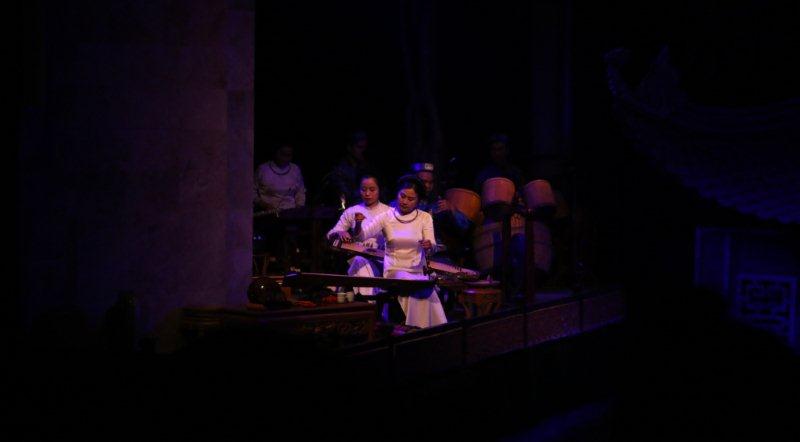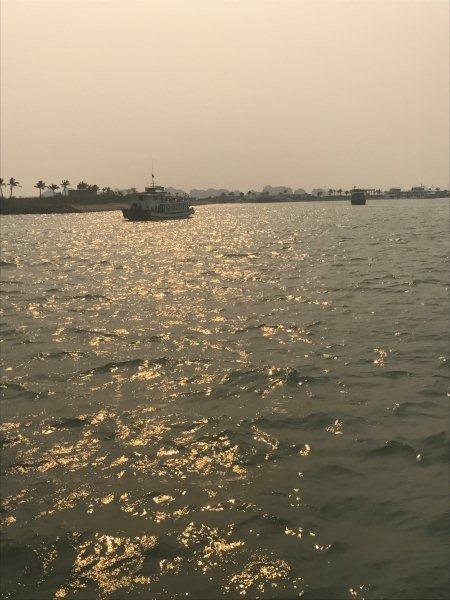The Ho Chi Minh Square- This is in Ha Noi and Ho Chi Ming's Toomb is preserved inside
Famous WATER PUPPET show
Hạ Long Bay (Vietnamese: Vịnh Hạ Long, IPA: [vînˀ hâːˀ lawŋm] ( listen)) is a UNESCO World Heritage Site and popular travel destination in Quảng Ninh Province, Vietnam. Administratively, the bay belongs to Hạ Long City, Cẩm Phả town, and is a part of Vân Đồn District. The bay features thousands of limestonekarsts and isles in various shapes and sizes. Hạ Long Bay is a center of a larger zone which includes Bái Tử Long Bay to the northeast, and Cát Bà Island to the southwest. These larger zones share a similar geological, geographical, geomorphological, climate and cultural characters.
listen)) is a UNESCO World Heritage Site and popular travel destination in Quảng Ninh Province, Vietnam. Administratively, the bay belongs to Hạ Long City, Cẩm Phả town, and is a part of Vân Đồn District. The bay features thousands of limestonekarsts and isles in various shapes and sizes. Hạ Long Bay is a center of a larger zone which includes Bái Tử Long Bay to the northeast, and Cát Bà Island to the southwest. These larger zones share a similar geological, geographical, geomorphological, climate and cultural characters.
Hạ Long Bay has an area of around 1,553 km2, including 1,960–2,000 islets, most of which are limestone. The core of the bay has an area of 334 km2 with a high density of 775 islets.[1] The limestone in this bay has gone through 500 million years of formation in different conditions and environments.
PICTURESQUE......
A Black Kite
....and breathtaking..
Stalactites and Stalagmites in a cave in one of the Islands...


Another Buddhist Temple


Ninh Bình city is a small city in the Red River Delta of northern Vietnam; it is the capital of Ninh Bình Province.
Tràng An Scenic Complex, a newly discovered area for tourism with stunning and untouched beauty. Recently Titan Crew, aka King Kong movie making crew has visited Trang An for some of the most important scenes in "Kong: the Skull Island", on air in 2017.

Tam Cốc-Bích Động, with a numerous other caves made up a spectacular region for boat touring and cave exploring.


Another temple close by...
A Mountain Goat...

From Ha Noi , we flew to Ho Chi Minh which was earlier known as Saigon.
The Opera House

The tallest building with 60 stories and a helipad..


Old Post Office Building...

The presidential Palace....


Formerly the Museum of Chinese and American War Crimes, the War Remnants Museum is consistently popular with Western tourists. Few museums anywhere convey the brutal effects of war on its civilian victims so powerfully.
The Mekong Delta (Vietnamese: Đồng bằng Sông Cửu Long "Nine Dragon river delta"), also known as the Western Region (Vietnamese: Miền Tây) or the South-western region (Vietnamese: Tây Nam Bộ) is the region in southwestern Vietnam where the Mekong River approaches and empties into the sea through a network of distributaries. The Mekong delta region encompasses a large portion of southwestern Vietnam of 39,000 square kilometres (15,000 sq mi).[1] The size of the area covered by water depends on the season.
We went in this boat across the river which is quite wide and had lunch in one of the restaurants on the other river bank.

The tunnels of Củ Chi are an immense network of connecting underground tunnels located in the Củ Chi District of Ho Chi Minh City (Saigon), Vietnam, and are part of a much larger network of tunnels that underlie much of the country. The Củ Chi tunnels were the location of several military campaigns during the Vietnam War, and were the Viet Cong's base of operations for the Tết Offensive in 1968.
The tunnels were used by Viet Cong soldiers as hiding spots during combat, as well as serving as communication and supply routes, hospitals, food and weapon caches and living quarters for numerous North Vietnamese fighters. The tunnel systems were of great importance to the Viet Cong in their resistance to American forces, and helped to counter the growing American military effort.

Some of the booby traps are re done to show the visitors...





























No comments:
Post a Comment